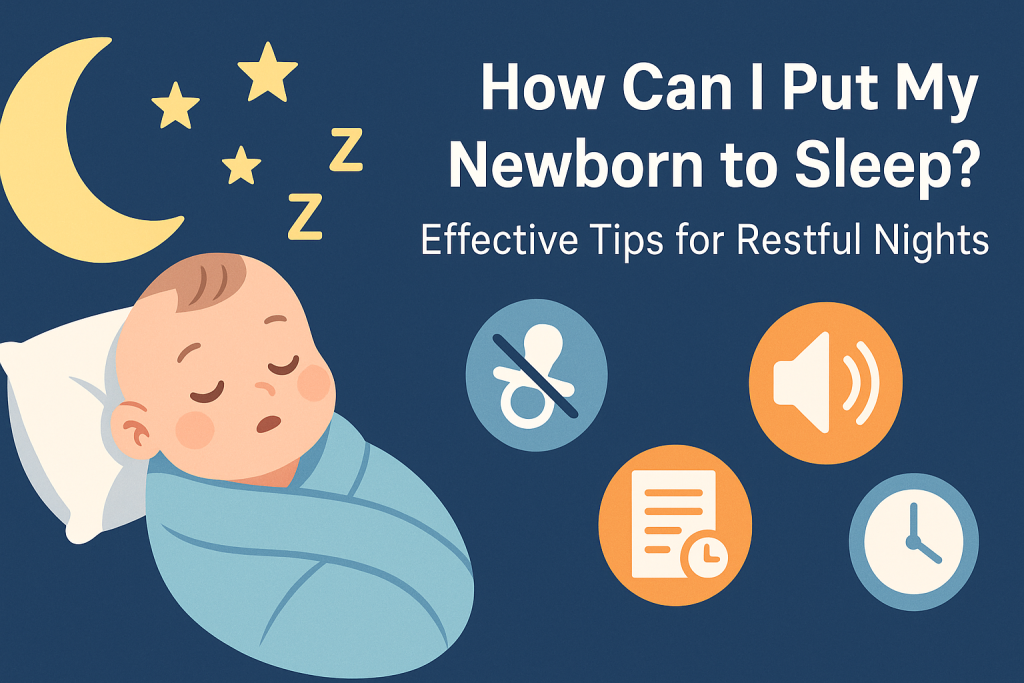Welcoming a newborn is a joyous occasion, but it often comes with sleepless nights and questions about infant sleep. One of the biggest challenges for new parents is knowing how to put a newborn to sleep safely and effectively. This comprehensive guide provides expert tips, techniques, and answers to common concerns, ensuring peaceful nights for both you and your baby.
Understanding Newborn Sleep
Newborns have unique sleep patterns distinct from older babies and adults. Understanding your newborn’s needs is the first step toward creating a healthy sleep environment.
How Much Do Newborns Sleep?
On average, newborns sleep between 14 to 17 hours within a 24-hour period, but rarely for more than 2-4 hours at a stretch. Sleep occurs across both day and night, as their circadian rhythms are still developing.
- Daytime naps: Frequent but short (30 minutes to 2 hours).
- Night sleep: Interrupted by feedings and diaper changes.
- Active and quiet sleep: Newborns cycle between light (REM) and deep sleep phases rapidly.
Why Is It Difficult for Newborns to Sleep?
It’s perfectly normal for newborns to have irregular sleep patterns. Factors such as hunger, discomfort, overstimulation, or simply needing comfort can cause frequent waking. Understanding these triggers helps you respond effectively and foster better sleep.
Tips to Help Your Newborn Sleep
Here are practical tips to answer the question: How can I put my newborn to sleep?
1. Create a Calm Sleep Environment
- Keep the room dark and quiet: Use blackout curtains and minimize noise to signal sleep time.
- Maintain a comfortable temperature: Ideally between 68-72°F (20-22°C).
- Use white noise: Gentle background noise like a fan or white noise machine can soothe infants and mask disruptive sounds.
- Safe sleep space: Place your baby on their back in a safety-approved crib or bassinet with a firm mattress and fitted sheet.
2. Develop a Soothing Bedtime Routine
Establishing a consistent pre-sleep routine helps cue your baby that it’s time to sleep. Routines provide comfort and anticipation of what comes next.
- Warm bath
- Gentle baby massage
- Soft lullaby or story
- Swaddling (if appropriate and safe)
- Dim the lights and minimize activity
3. Recognize Sleep Cues
Newborns often show signs when they are tired. Learning to recognize these cues can help you put your baby down before they become overtired and fussy.
- Yawning
- Fussiness or irritability
- Staring or gazing off
- Rubbing eyes or face
- Decreased activity
4. Encourage Day-Night Differentiation
Help your newborn gradually distinguish between day and night:
- Keep days bright and active
- Expose your baby to natural daylight
- Limit daytime naps to 2 hours when possible
- Keep nights dark and quiet with minimal stimulation during feedings
5. Practice Safe Sleep Guidelines
Ensuring your newborn’s safety during sleep is crucial. Follow the American Academy of Pediatrics (AAP) recommendations:
- Always place your baby on their back to sleep
- Use a firm, flat mattress with a fitted sheet
- No pillows, toys, or loose bedding in the crib
- Keep your baby’s sleep area in the same room as you (room-sharing), not the same bed
- Avoid overheating (dress your baby in light sleep clothing and keep the room cool)
Soothing Techniques to Help Your Baby Fall Asleep
If your newborn is having trouble settling, try these proven calming techniques:
Swaddling
Swaddling mimics the snugness of the womb and can help calm startle reflexes. Ensure the swaddle is snug but not too tight, hips can move, and stop swaddling when baby shows signs of rolling over.
Gentle Rocking or Swaying
Rocking in a chair, gentle bouncing, or rhythmic swaying often comforts newborns. Always ensure baby’s head and neck are supported.
Feeding Before Bedtime
Feeding before sleep helps ensure your baby isn’t waking from hunger. Try not to let baby fall fully asleep while feeding to promote self-soothing skills.
Pacifiers
Offering a pacifier at bedtime can help soothe some babies and is associated with a reduced risk of SIDS, according to pediatric guidelines.
Common Sleep Problems and How to Handle Them
Frequent Night Wakings
Night wakings are common in newborns due to their need for frequent feedings. As your baby grows, their stomach capacity increases and sleep stretches usually lengthen.
Day-Night Confusion
Some newborns mix up day and night. Be patient and use the tips above to gradually help them adjust.
Fussiness at Night
If your baby is fussy, check basic needs: hunger, diaper, temperature, and comfort. Holding your baby, swaddling, or using white noise can help.
When to Seek Help
If your newborn consistently has trouble sleeping, seems in pain, or you notice signs like persistent crying, feeding difficulties, or breathing concerns, consult your pediatrician. They can rule out medical issues like reflux, allergies, or sleep disorders.
Frequently Asked Questions
Should I let my newborn cry it out?
No. Sleep training methods like “cry it out” are not recommended for newborns. At this stage, babies need prompt and responsive care.
Is co-sleeping safe?
The AAP recommends room-sharing without bed-sharing to reduce the risk of SIDS and other sleep-related dangers.
When will my baby sleep through the night?
Most newborns don’t sleep through the night until at least 3-6 months old. Every baby is different, but setting healthy sleep habits early can help.
Conclusion: Patience and Consistency Are Key
Figuring out how to put your newborn to sleep is a learning process for both baby and parent. By creating a soothing environment, following safe sleep practices, and responding lovingly to your baby’s cues, you’re laying the foundation for healthy sleep habits that will benefit your child for years to come. Remember, every baby is unique—what works for one may not work for another, so be patient and trust your instincts.


